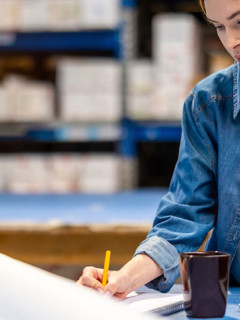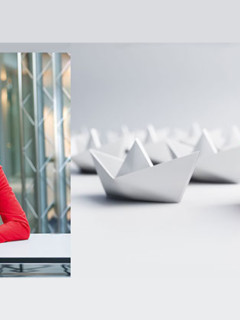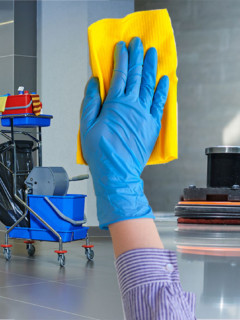Back pain is one of the most common medically unsolved problems in this country. In Germany, 74-85 percent suffer from back pain more or less regularly. This means that back pain causes economic damage amounting to approx. 49 billion euros every year. According to the DAK Health Report 2017, 22.2% of employees in German companies were absent from work due to musculoskeletal disorders. Back disorders form the largest subgroup. There were 81.06 sick days per 100 insured persons due to “back”. Simple tricks and aids can make a difference, such as anti-fatigue floor mats.
The causes of back pain
The exact causes of the “common ailment of the back” remain alarmingly often unspecific. In addition to complaints that can be clearly defined as the result of accidents, illnesses or, for example, slipped discs, the clear cause remains unexplained in 85% of those affected. Rather, the causes seem to lie in a multitude of favourable circumstances:
We all spend most of our working day sitting down and do not move enough in our (limited) free time. We can usually “put up with” this for a few years, but as we get older we get the bill.
Causes of back pain:
- Occupation
- Lack of exercise in everyday life
- Wear and tear
- Ageing process
- Overload
- Herniated disc
Most of the time, the trigger for back pain is not found in the one cause, the one “incident”. Rather, a few factors favour each other in the development of the problem; doctors speak of a so-called multifactorial disease.
Ergonomics at the workplace: We sit too much!
Ergonomics at the workplace is therefore an increasingly important topic in the world of work. Ergonomics is an important part of occupational health and safety. Especially when setting up standing workstations, this topic is of outstanding importance.
It doesn’t have to be every workplace ..: At RAJA, for example, there is at least one standing workstation in every office that can be used if necessary. Talk to your employer and health insurance company about the possibilities.
Why is standing still bad?
But even working while standing is not the whole solution. Even the standing posture becomes a problem if it is adopted permanently, because the human body is made for movement. Lack of movement at work is a fairly recent problem: industrialisation and the associated mechanisation of work processes as well as the division of labour have made work more effective but have also made it less mobile. Fixed machines now often dictated the work cycle and people moved less.
A so-called standing chair can be used in the warehouse or for order picking. This is an ideal support for standing workstations.
What happens when standing
Standing still is hard work for the body. This is because when standing, the skeleton and joints play the supporting role – they take on the entire weight load of the body. If you want to stand, you have to stiffen the joints. This is done by large muscle groups that prevent slumping via tendons and ligaments. In addition, the body must be balanced, which also requires large muscle groups. Standing for long periods on hard surfaces causes overstraining and one-sided strain on joints, tendons and muscles, which in turn leads to muscle hardening, poor blood circulation and thus strain on the cardiovascular system, muscle and joint pain, poor posture and back problems and thus to absenteeism from work.
Muscles, joints, intervertebral discs, tendons and ligaments can only fulfil their function if they are well supplied with blood, which is achieved through regular tension and relaxation.
Anti-fatigue foot mats provide relief
Anti-fatigue mats make a valuable contribution to employee health. Through continuous micro-movements of the feet, the mats have a cushioning effect, they provide better balance and an even weight distribution between the left and right foot. In this way, they provide better blood circulation to the leg muscles.
The anti-slip effect and the protection against cold floors additionally reduce the risk of accidents. This increases the health and well-being of the employees as well as the efficiency of their work. In addition, it is advisable to install suitable standing aids at the workplace so that a mixture of standing and sitting activities takes place and the joints and muscles can be relieved.
Useful areas of application for anti-fatigue floor mats
Everywhere where people stand in one place for a long time due to their job:
- Assembly line
- Logistics
- Packing station
- Kitchens
- Food industry
- Receptions
- Exhibition stands
- Machine lines
Bringing movement into the working day
Next time, bring the accounting documents to the accounting department in person instead of forwarding them via “in-house mail”. And for the two or three floors to the canteen, the staircase is a real alternative.
Last but not least, the occasional trip to the printer, the coffee machine or a colleague helps to ensure that the working day is easy to “get through”.

















